Maxfield Parrish (1870-1966)
Do you think you may own a painting or illustration by Maxfield Parrish?
We Perform Maxfield Parrish art authentication. Maxfield Parrish appraisal. Maxfield Parrish certificates of authenticity (COA). Maxfield Parrish analysis, research, scientific tests, full art authentications. We will help you sell your Maxfield Parrish or we will sell it for you.
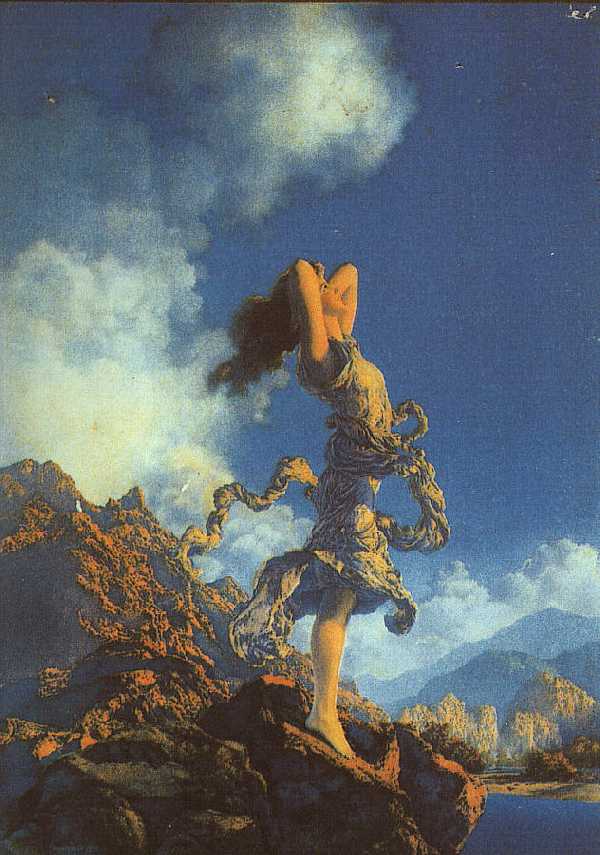
Maxfield Parrish was an American painter and illustrator during the Golden Age of illustration. Born Frederick Parrish in Philadelphia, Pennsylvania, Parrish took on his mothers’ maiden name “Maxfield” as his own for his professional name. Encouraged by his parents, Parrish showed a proficiency in drawing as a young boy. He eventually attended Harvard College as well as The Pennsylvania Academy of the Fine Arts.

It is hard to classify what class of painting Parrish’s style falls into. He did not affiliate himself with any one school of art, nor did he join any groups. Parrish also did not seem to have many artists that he took after or emulated, though his style was certainly a precursor for the Art Deco movement. Parrish did however study the work of the pre-Raphaelite English painters, and was particularly fond of the works of Lord Leighton. His work was one part traditional, and one part magical, created through the use of brilliant techniques and a fantastic imagination. Though his subjects may have been painted in a photorealistic fashion, his settings were anything but.
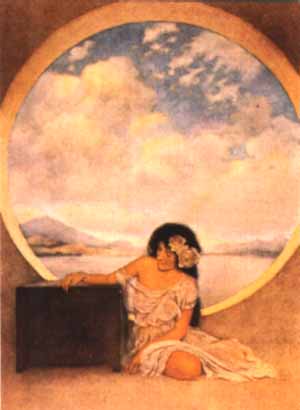

Parrish’s career as an artist began with a commission to illustrate “Mother Goose in Prose” by L.Frank Baum in 1897. This became only the first in a series of book illustrations that Parrish would execute. Books illustrated by Parrish remain highly collectible items to this day. From the late 1800’s through the 1920’s, Parrish continued to illustrate for magazines and advertisements. However, in the 1920’s, Parrish turned away from illustrating to concentrate more on painting.
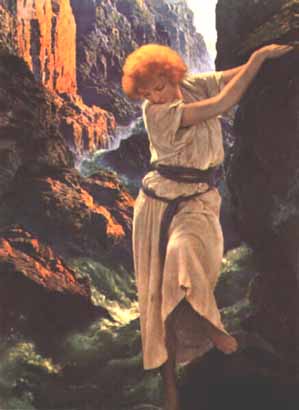
In his earliest paintings, Parrish often painted fantasy-like settings, sometimes featuring androgynous nudes. These paintings were also used for post cards and calendars, and Parrish lived quite well for some time off of the royalties that they brought in.


By the 1930’s, Parrish began to focus more on landscapes. These proved to not be as popular as his earlier, more fantastical compositions, but he profited off of them nonetheless. Parrish continued to paint until 1960, when he married his model and lifelong companion Susan Lewis.
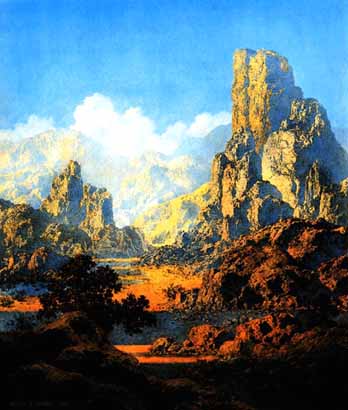

Parrish is also known for a color that he made famous, aptly named “Parrish blue” which the artist achieved by applying various coats of varnish to his paintings. This was a practice that Parrish often used to create the luminous, magical glow of the lighting in his paintings.
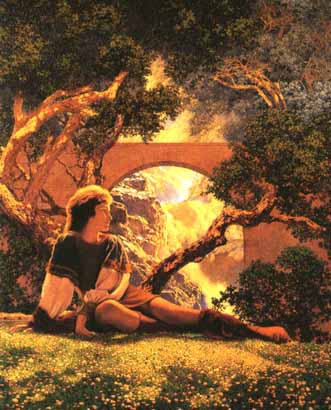
Parrish lived at his estate called “The Oaks” near Cornish, New Hampshire for most of his career, and often used his wooded environment as inspiration for his paintings. Cornish eventually became an artist’s colony of sorts, in part due to Parrish. Parrish would also often construct models of the buildings in his paintings to work on lighting techniques before he would paint them.
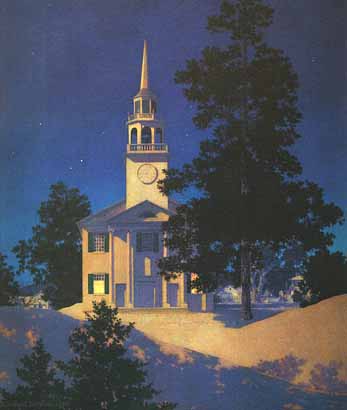
Parrish is undoubtedly one of America’s most beloved artists. It is said that during the height of his career in the 1920’s, one out of every four American homes had a Parrish painting or print hanging on their wall. By 1935, Parrish commanded upwards of $2,000 per illustration. Parrish was perhaps the most famous American painter of his time until Norman Rockwell emerged in the 1940’s. His work was so widely popular, that it has been said that his painting “Daybreak” may very well be the best selling art print in history.
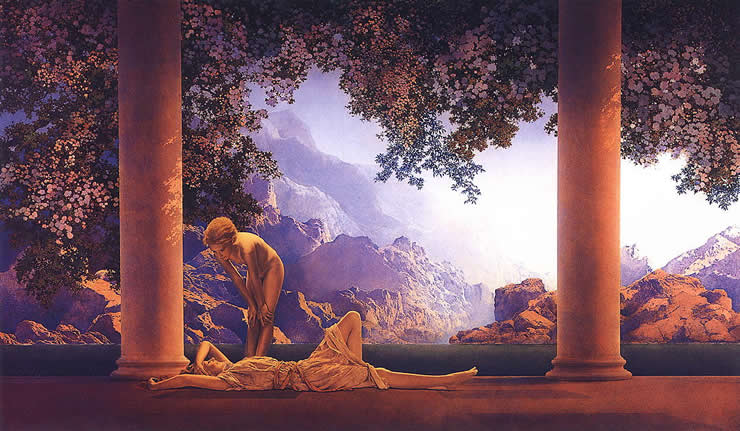
Still wondering about a fantasy painting or illustration in your home? Contact us…it could be by Maxfield Parrish.
Reviews
1,217 global ratings
5 Star
4 Star
3 Star
2 Star
1 Star
Your evaluation is very important to us. Thank you.
